The history of Vologda began with the foundation of the Trinity Monastery. According to «The Life of St. Gerasimus», he founded the monastery in 1147, which makes Vologda the age-mate of Moscow, although archaeologists have found here constructions of the XIII century only. Vologda had been part of the Novgorod Republic for several centuries, but in the late XIV century Moscow princes laid claims on it. In 1371, the currently functional Spaso-Prilutsky Monastery, the first in the Russian North, was founded under their patronage. The oldest surviving building on its territory is the Spassky Cathedral of 1542.
Tsar Ivan the Terrible, who frequently visited the monasteries in these parts, even contemplated making Vologda the capital of the country. Under him, the construction of the stone Vologda Kremlin started in 1567. As planned, it should have been twice larger than that of Moscow. The Kremlin was laid on the Day of the Holy Apostles Jason (Nason in Russian tradition) and Sosipater, therefore Vologda was also called the «Nason-gorod» (Nason-town). However, in 1571 the Tsar unexpectedly left Vologda and has never returned here. As legend has it, when he was in the church under construction, a piece of plaster fell on his head, which he considered an omen of misfortune. In any case, the Kremlin was completed, but on a smaller scale than it was conceived. Now the Kremlin and its five-domed St. Sophia Cathedral with preserved frescoes of the XVII century is the landmark of Vologda.
While Vologda was located on the trade route between the Moscow tsardom and its western neighbors, its welfare grew. Osip Nepeya, a native of Vologda, even became the first Russian ambassador to England. A trade of furs, fish, bread and wax started to develop here. Moreover, wood and flax were processed in Vologda, and monasteries dealt with salt-making.
Fish dishes still take pride of place in the local cuisine. In Vologda you should definitely taste potato flapjacks with herring, and fried freshwater vendace which was called «royal herring» in the XVII century. Also popular are pies, as for instance a fish pie: a layer-cake of fish fillet, potatoes and onions. A traditional winter dish of peasant cuisine is Vologda-style Shti (Vologda-style Shchi) (Russian cabbage soup). It preserved for the winter in October: green leaves and heads of cabbage are cut and boiled in a cauldron on a fire. Then the mass is put in a wooden vat in layers, with rye sour dough and salt. To prepare the shti, the frozen cabbage mass is cut from the vat and simmer in the oven with a lamb. The shti is served with sour cream and boiled potatoes. As for the latter, here people like to eat it with butter, especially since natives of Vologda are experts in it. Vologda butter is very popular and much loved in Russia. This butter has an author: in 1878 Nikolay Vereshchagin tried to heat pasteurized cream for 10-15 minutes to the temperature of 98°C and thus created a «gold standard» of butter. It is believed that butter has such a light nutty flavor thanks to the milk of the Vologda cows which graze here on water-meadows. Today, the dairy products from the Vologda Region hold pride of place on the shelves in both capitals. Before the Revolution of 1917, the Vologda butter was even exported to Europe under the brand name «Petersburzhskoye». It officially became «Vologda butter» as late as in 1939, and only local producers have a right for the brand.
In the XVIII century Vologda went through tough times. In 1612 Polish-Lithuanian troops entered the city. The city was devastated and burnt within three days. In memory of those events, a festival is held every year in late May in the Kirillo-Belozersky Monastery: a kind of reconstruction of the monastery siege, with a horse and foot parade, a military camp and a medieval fair.
Vologda was quickly restored after that tragedy. Emperor Peter the Great brought new hopes to Vologda. He visited the city more than a few times and considered it as a promising shipbuilding center. The house of a Dutch merchant of the 17th century, where the Emperor lived, was transformed into a memorial museum of Peter the Great in 1885. This is the oldest museum of Vologda. However, after St. Petersburg was founded, Vologda withdrew into the shadows of the new capital. Moreover, in 1722 Peter the Great issued a decree restricting trade through Arkhangelsk, which dealt a heavy blow to the economic well-being of the city. Later, under Catherine the Great, the monasteries lost their lands and began to fall into decay. At the same time, the city retained the status of a regional center, having become the capital of the Vologda Governorate in 1796. Later, the city life was somewhat revived after the construction of railways in the late XIX century, when Vologda connected with Yaroslavl, Moscow, Arkhangelsk and St. Petersburg.
In the XIX century, Vologda became a place of exile for revolutionaries. The Vologda Political Exile Museum «tells» about the life of Joseph Stalin, Lenin’s sister Maria Ulyanova and the future leaders of the Bolsheviks — Molotov and Lunacharsky in Vologda. A stele on Kozlenskaya Street recalls that the classic of English literature, Joseph Conrad, whose father, a Pole, was exiled to Vologda in 1861, spent four years of his childhood here.
Vologda is famous for its wooden houses in the classicism, Empire and modernist style with carved cornices, balconies and platbands. However, historical buildings become fewer and fewer. When walking through the city, it’s worth paying attention to the Vorobyov’s house on Zasodimsky Street, house 29 on Lermontov Street and Butyrina’s house on Blagoveshchenskaya Street. «The World of the Forgotten Things» Museum will introduce you to the everyday life of the city people. Here, the interior of a typical city house on the cusp of the XIX and XX centuries is reconstructed on the first floor. The Architecture and Ethnography Museum «Semenkovo» is worth a visit to learn what the northern Russian village of the same period looked like and how it lived. You will also have an interesting excursion in the only Lace Museum in Russia on the Kremlyovskaya Square. Here you can appreciate the niceties and complexities of lace-making from linen threads.
There are several original monuments in Vologda, such as the Monument to the First Lantern on Prechistenskaya Embankment, where the first city electric lantern appeared 100 years ago. The letter «O» Monument, installed in 2012 in the «Sobornaya Gorka» Park, confirms the sense of humor of the Vologda citizens who are proud of their «okanie» (retention of unstressed ‘o’).
The guests of Vologda can always enjoy a rich festival program in the warm season. In particular, the International Folk Crafts Festival «Voice of Crafts» is organized here during the latter part of June with the simultaneous holding of the International Lace Festival «Vita Lace». In early July, the city hosts guests from Europe at the «VOICES» Festival of Young European Cinema, on the results of which the prize for the best debut and the Audience Award are granted. For more than 12 years Vologda has been gathering Russian and foreign musicians for the «Blues in Veranda» International Festival which is held in the middle of July. The Vologda Kremlin hosts the International Theatre Festival «Voices of History» once every two years. In winter, mass celebrations are held in Vologda on New Year’s, Christmas and Maslenitsa (Shrovetide).
Besides the cultural and event tourism, ecological tourism is also developing here. The Vologda Russky Sever National Park («Russian North») is one of the ten most popular national parks in Russia among ecotourists. Its territory houses the ancient Kirillo-Belozersky Monastery and Ferapontov Monastery with unique Dionisy’s frescoes of the XVI century, and also the first Russian Nilo-Sorskaya Pustyn. On the top of Maura Mountain there is a huge stone with a footprint. As legend has it, this is a foot print of Saint Cyril, who was looking around the Vologda expanses from the mountain in search of a suitable place for the monastery. From Vologda, you can also go on a cruise along Belozerye, where nearly 50 lakes are connected by rivers and canals, including the famous Northern Dvina Canal. Ancient Vologda is ready to surprise visitors with unforgettable beauties of nature and unique masterpieces of Russian culture.
Get directions
Vologda is located 460 km from Moscow and 630 km from St. Petersburg. From Moscow, you can get to Vologda by train within 8 — 9 hours or spend an hour less by bus or by car.




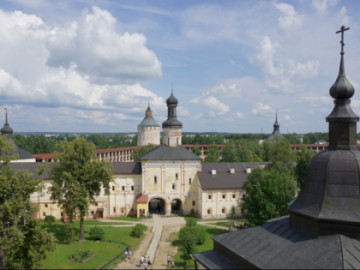
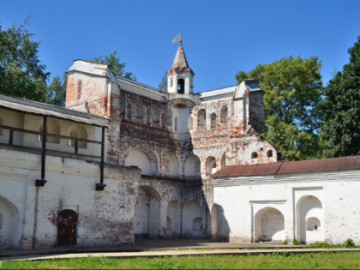

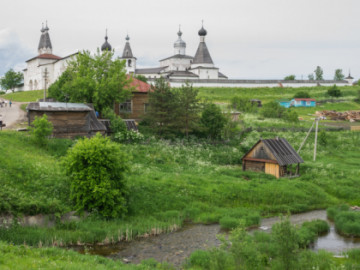




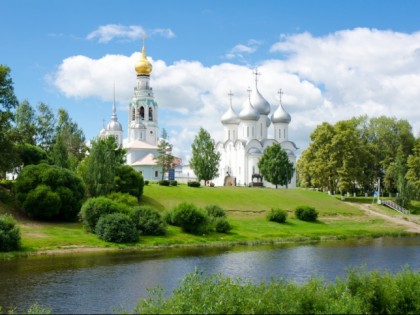
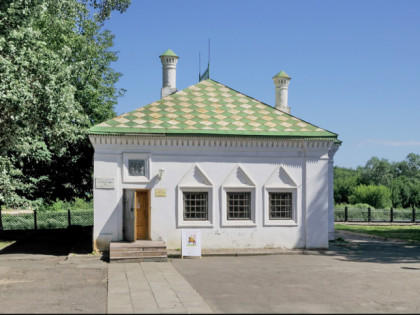
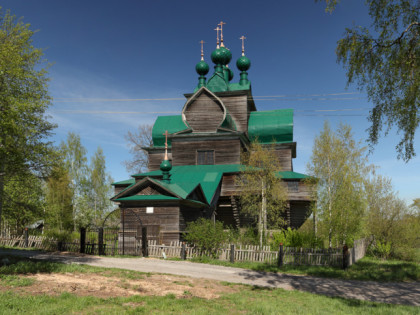
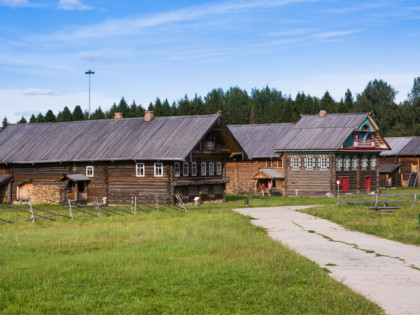
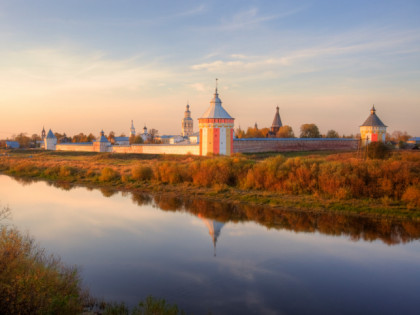
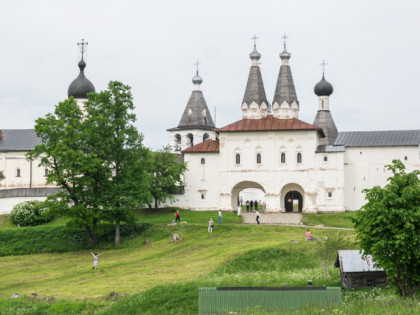
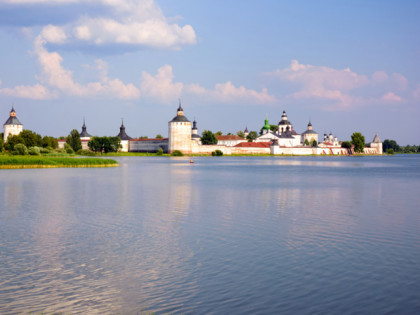
 Museums and Exhibitions
Museums and Exhibitions
 Other places
Other places
 Architectural Monuments
Architectural Monuments
 Temples and places of worship
Temples and places of worship